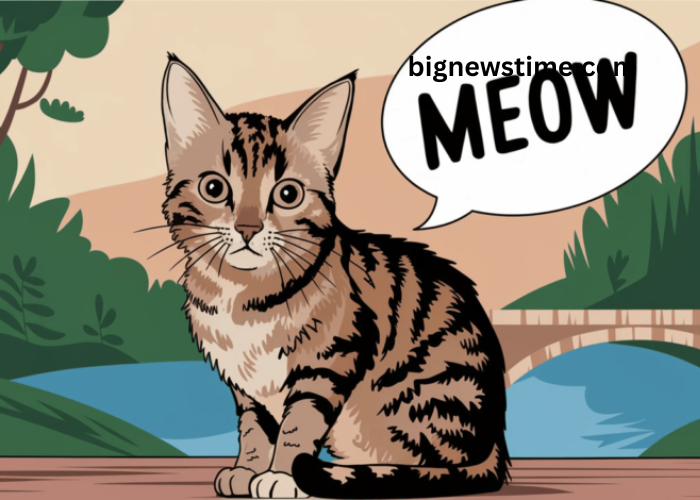Lifestyle
drawing:8mi9vnj1ccs= cat
Published
5 months agoon
By
Admin
In the realm of art, few subjects capture the imagination as profoundly as cats. These enigmatic creatures, with their fluid movements and expressive faces, have inspired artists for centuries. From ancient Egyptian hieroglyphs to modern digital illustrations, cats continue to be a beloved subject in the world of drawing:8mi9vnj1ccs= cat.
Drawing cats is an intriguing challenge for artists of all levels. Their diverse fur patterns, playful antics, and mysterious demeanor offer a rich tapestry for artistic expression. The appeal of drawing a cat lies not just in its physical attributes, but also in the character and emotion that can be conveyed through its portrayal.
The Anatomy of a Cat: A Foundation for drawing:8mi9vnj1ccs= cat
Before diving into drawing a cat, it’s essential to understand its anatomy. A cat’s body is a combination of graceful curves and dynamic lines. To capture their essence, artists must pay attention to their unique skeletal and muscular structures. The key is to observe and replicate the way their bodies move and interact with their environment.
A typical cat anatomy includes a flexible spine, which allows for a wide range of motion. This flexibility is evident when a cat stretches, curls up, or leaps. The legs are slender but strong, built for agility and swift movements. The head is rounded with prominent, expressive eyes and a distinct triangular nose. Understanding these anatomical features helps in creating a drawing that feels authentic and alive.
Techniques for Drawing Cats
- Start with Basic Shapes: Begin by sketching basic shapes to outline the cat’s body. Use circles and ovals for the head and body, and lines for the limbs and tail. This preliminary sketch serves as a foundation for refining the details later.
- Focus on Proportions: Cats have specific proportions that differ from other animals. Their heads are relatively large compared to their bodies, and their legs are slender. Getting these proportions right is crucial for a realistic representation.
- Capture the Fur: drawing:8mi9vnj1ccs= cat fur can be daunting due to its texture and volume. Start with light strokes to outline the direction of the fur growth. Gradually build up layers to create a sense of depth and softness. The key is to vary the stroke length and pressure to mimic the natural fur texture.
- Emphasize the Eyes: A cat’s eyes are often the focal point of the drawing. They are large, expressive, and can convey a range of emotions. Pay special attention to the shape, color, and reflection in the eyes to bring your drawing to life.
- Add Details and Texture: Once the basic outline and fur texture are in place, add finer details like whiskers, claws, and the subtle nuances of fur patterns. These details enhance the realism of the drawing and add depth.
The Emotional Connection: Why Cats Resonate
Cats are not only visually captivating but also emotionally engaging. They exhibit a wide range of behaviors that reflect their personalities, from the playful antics of a kitten to the serene elegance of a lounging adult cat. Capturing these traits in a drawing:8mi9vnj1ccs= cat allows artists to convey the unique character of each individual cat.
The connection between artists and their feline subjects often goes beyond mere observation. Many artists have a personal bond with cats, which influences their portrayal. Whether it’s a cherished pet or a stray encountered on a walk, these experiences enrich the artistic process and bring a personal touch to the work.
The Evolution of Cat Art
Throughout history, cats have appeared in various forms of art. In ancient Egypt, they were revered and often depicted in sculptures and paintings. In the 19th century, artists like Théophile Steinlen and Louis Wain brought cats into the limelight with their whimsical and charming portrayals. Today, digital artists and illustrators continue to explore new ways to depict cats, embracing modern tools and techniques.
The evolution of cat art reflects changing perceptions and technologies, but the core appeal remains the same: cats are fascinating subjects that evoke a range of emotions and creative possibilities. Whether through traditional pencil sketches or digital masterpieces, the allure of cats in art endures.
Conclusion
drawing:8mi9vnj1ccs= cat offers an opportunity to explore a blend of technical skill and emotional expression. By understanding their anatomy, mastering drawing techniques, and tapping into the emotional connection, artists can create compelling representations of these captivating creatures. As cats continue to inspire and enchant, their presence in art will undoubtedly persist, celebrating their timeless charm and enigmatic beauty.
You may like

Efficient ACA Compliance Management with ACA-Track

Key Software Systems: Future-Proofing Courier Operations with Technology

Refrigerated Trailers: Benefits and Uses

100 Dynamic Duos: Legendary Pairings That Transcend Time
ARK: Survival Evolved Game Icons and Banners

cute:i1cdycptg50= drawings

Understanding New York Sports Club Membership: What It Offers and What Affects the Cost

Safety Tips for Compressed Air Dryers

drawing:23vyczbybxu= billie eilish

drawing:056aoyw74ce= rick and morty

How can online food delivery sales increase and attract the maximum number of customers in 2023?

MEP BIM: Revolutionizing Building Infrastructure Design

Revolutionizing Industries with ChatGPT

Resolving the Israeli-Palestinian Conflict: A Comprehensive Analysis

Skillful Passion: Wisconsin’s Dominant Volleyball Team

Virtual Reality Rental: A Futuristic Experience

Unlocking the Potential of cryptonewzhub.com Internet

Negin Behazin vs Dignity Health: Comprehensive Comparison

Unraveling the Mystery: Robert Card’s Tragic Passing

iPhone 14 Pro Max: Unveiling the Next Level Innovation

Efficient ACA Compliance Management with ACA-Track

Key Software Systems: Future-Proofing Courier Operations with Technology

Refrigerated Trailers: Benefits and Uses

100 Dynamic Duos: Legendary Pairings That Transcend Time
ARK: Survival Evolved Game Icons and Banners

cute:i1cdycptg50= drawings

Understanding New York Sports Club Membership: What It Offers and What Affects the Cost

Safety Tips for Compressed Air Dryers

drawing:23vyczbybxu= billie eilish

